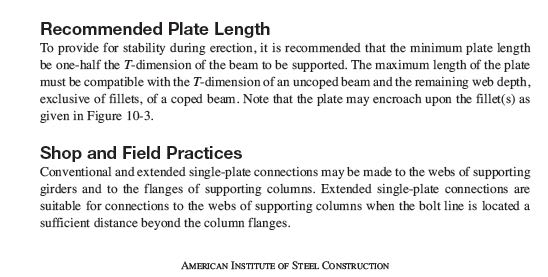I am designing single plate shear connections and wonder if there is a rule for the minimum length of the plate vs beam depth.
For example a 2 bolt connection may have adequate capacity to support a W16 beam but the plate is only 5 1/2" long or about 1/3 of the 16" beam depth. Is that sufficient depth to prevent rotation?
Is there a rule of thumb that says the plate needs to be, say, between 1/2 and 2/3 of the beam depth?
I tried to find an answer here on the forums, the specification, and AISC but couldn't.
Thanks
For example a 2 bolt connection may have adequate capacity to support a W16 beam but the plate is only 5 1/2" long or about 1/3 of the 16" beam depth. Is that sufficient depth to prevent rotation?
Is there a rule of thumb that says the plate needs to be, say, between 1/2 and 2/3 of the beam depth?
I tried to find an answer here on the forums, the specification, and AISC but couldn't.
Thanks

